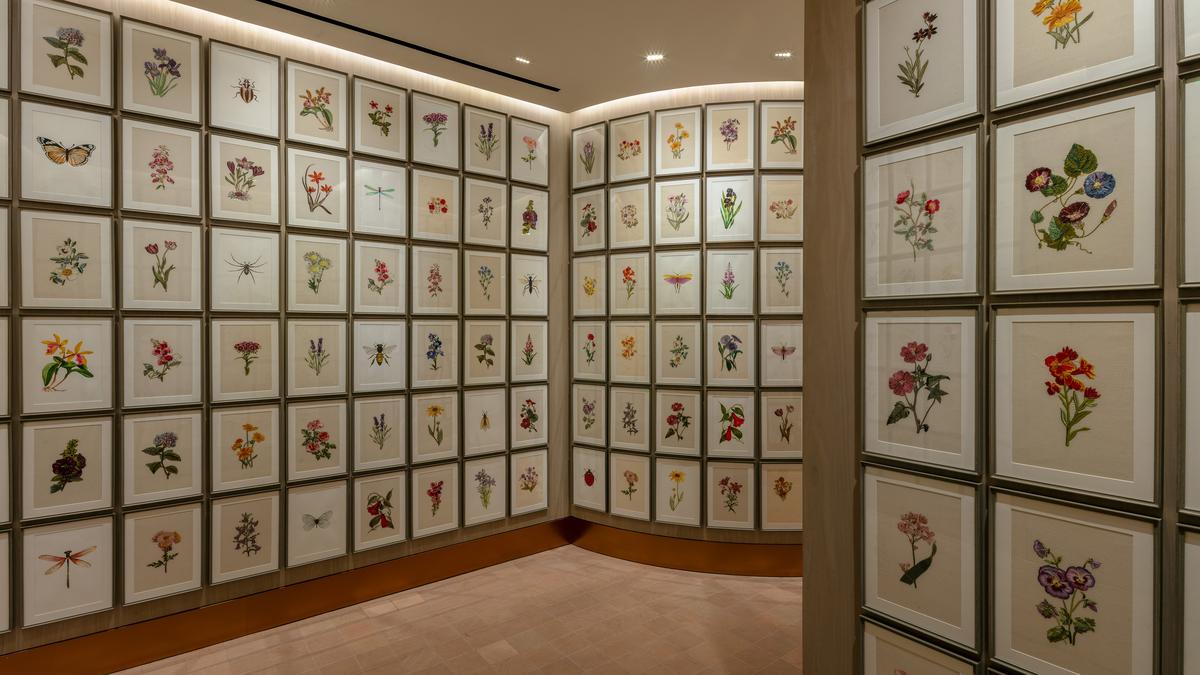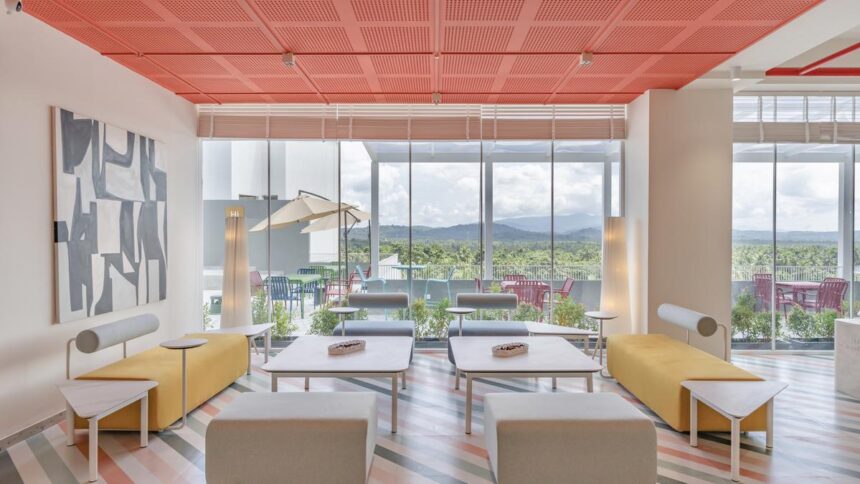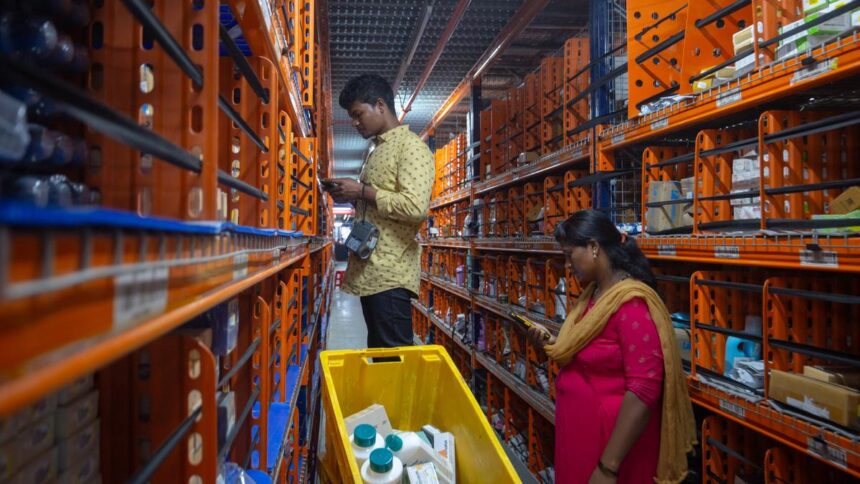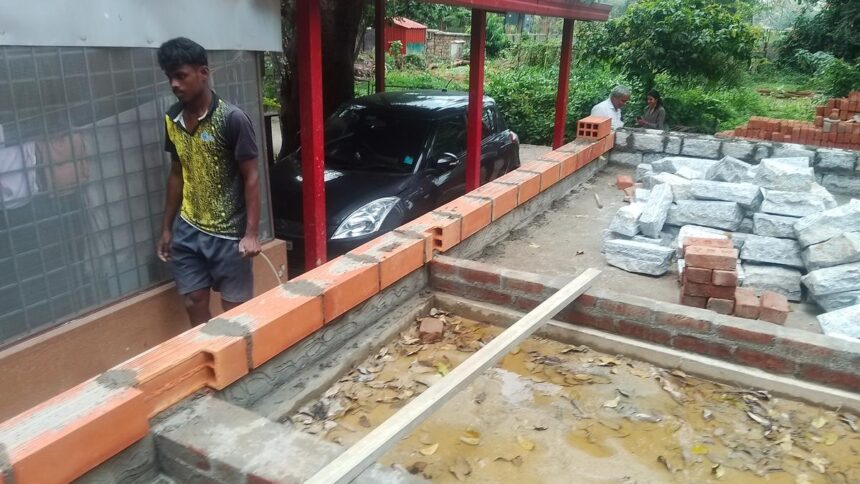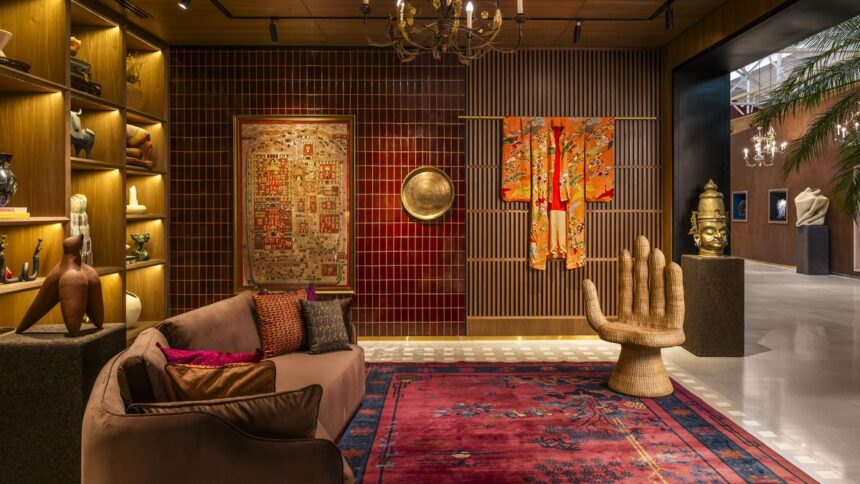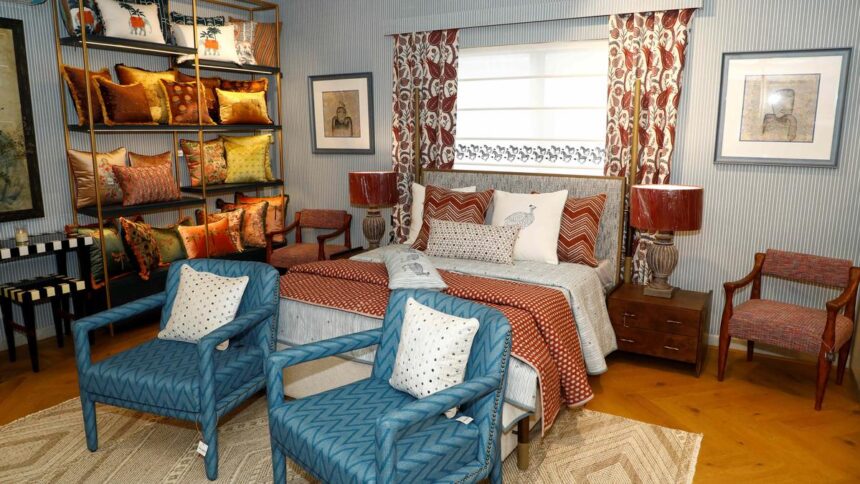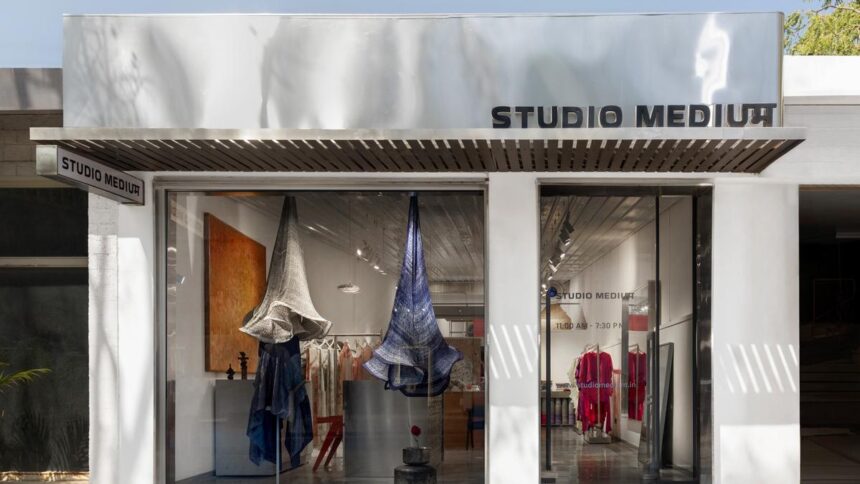In Mumbai’s historic Kala Ghoda precinct, the ground floor of the City Ice Building has been transformed into Rahul Mishra’s sprawling flagship atelier. It is the fashion designer’s largest retail endeavor in India, conceived as a museum-like maison by architect and designer Rooshad Shroff, whose work is synonymous with exquisite Indian craftsmanship for the modern aesthete.
Behind the luxury Mumbai outposts of Louis Vuitton, Kunal Rawal, and the design Mecca Nilaya Anthology, Shroff also collaborated with artist and designer Patrick Kinmonth to envision and execute the 2023 India in Fashion exhibition at the Nita Mukesh Ambani Cultural Centre. It had featured Mishra’s couture. For Mishra, Shroff was the right person to bring his Mumbai maison into reality, especially with what he had in mind. “I envisioned the store as a gallery, spread seamlessly across a single floor,” the designer shares.
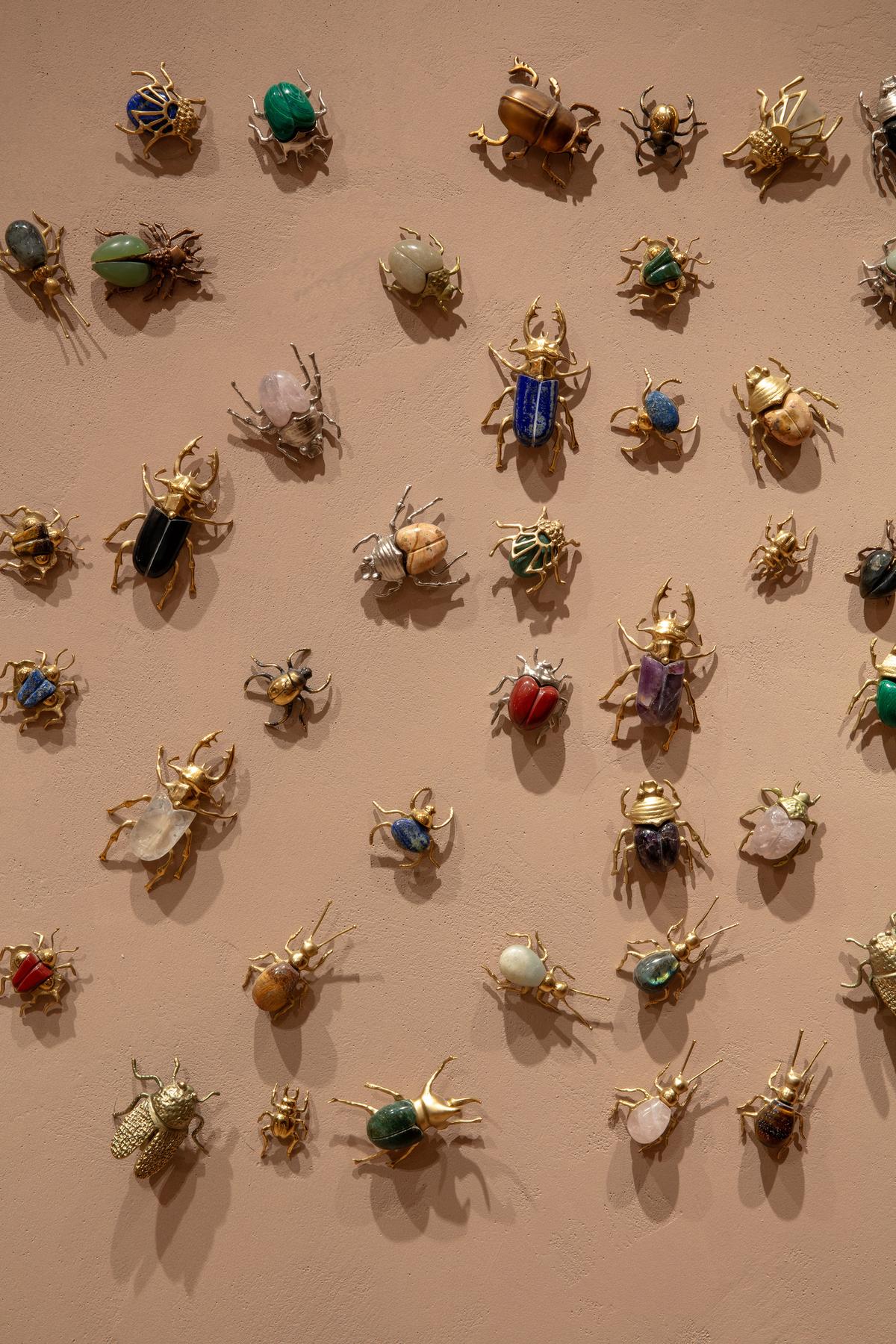
Mishra’s design leitmotifs, drawn from the botanical, avian, and entomological worlds that he has created in couture, are anchored in the space itself.
| Photo Credit:
Pankaj Anand
After a long search for a suitable single-level space, Mishra came across the City Ice Building, a historical structure with a nautical façade located on a street corner. The edifice, around 80 years old, is said to have been a former ice factory in the 1970s. “There’s a renewed appreciation for the old and heritage,” says Shroff, about Horniman Circle and the Kala Ghoda areas becoming luxury fashion retail hubs, reflecting the larger movement of valuing and reimagining Mumbai’s historic architecture.
The 7,500 sq.ft space with its soaring 15-foot-high ceilings was the perfect backdrop for Mishra’s oeuvre. “It’s always nice to give a space a second life and see how these heritage buildings can be re-adapted. Many of them also offer generous ceiling heights, such as this one, which create striking retail experiences, especially in the back rooms, where there’s a great volume to play with,” says Shroff.
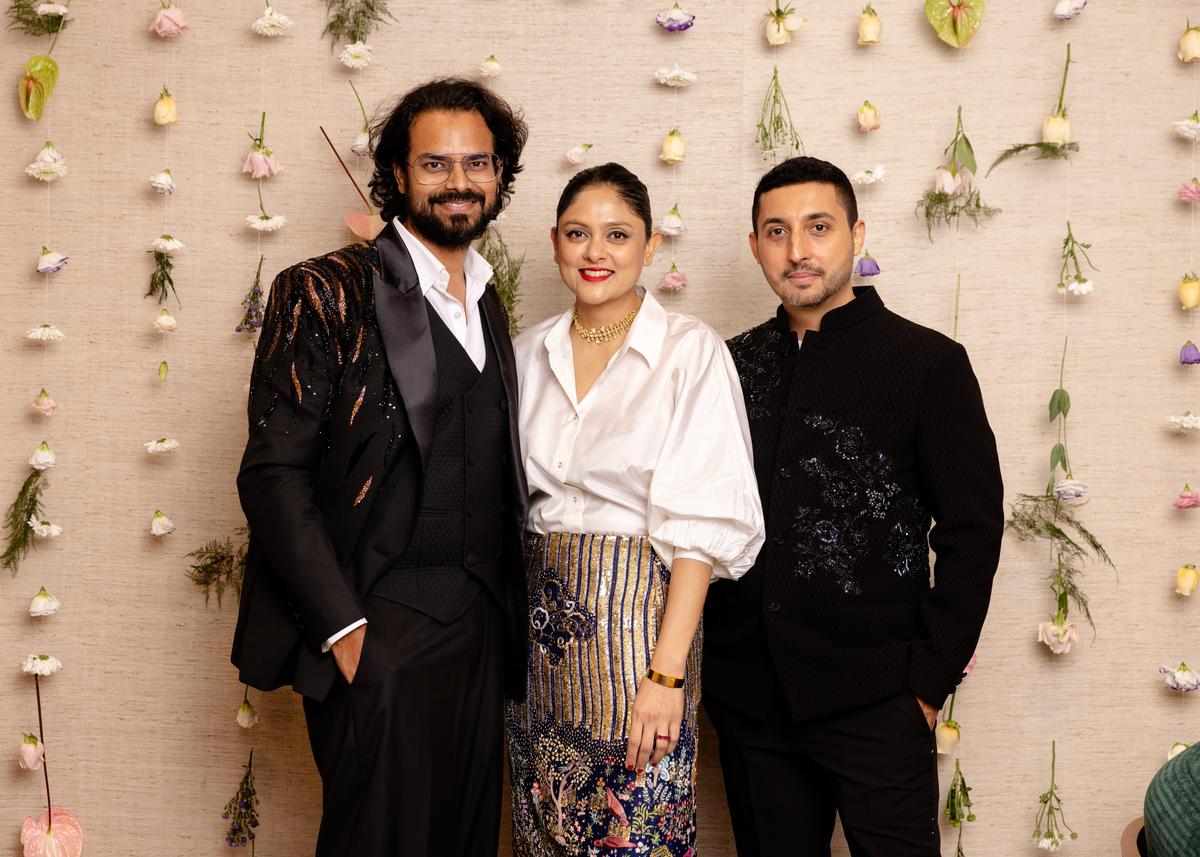
Rahul Mishra, Divya Bhatt Mishra, and Rooshad Shroff at the event.
| Photo Credit:
Special arrangement
The building offered a rectangular bare shell for the duo to flesh out their ideas. Being in a state of disrepair, it took nearly two months before the space was ready for its transformation. Inside, drawings, dried flowers, archival motifs, and embroidery swatches are presented as objects of art, offering an intimate window into the process behind couture.
“Although the original space was a clean rectangle, the idea was to transform it into an immersive storytelling environment, along with retail. Each chamber represents a different chapter of Rahul Mishra’s journey,” says Shroff. The cavernous floor was framed into cocoons, conducive to the duo’s vision of ‘meandering’ through, each section an invitation to peel back layers of Mishra’s meticulous design process and impeccable craftsmanship.
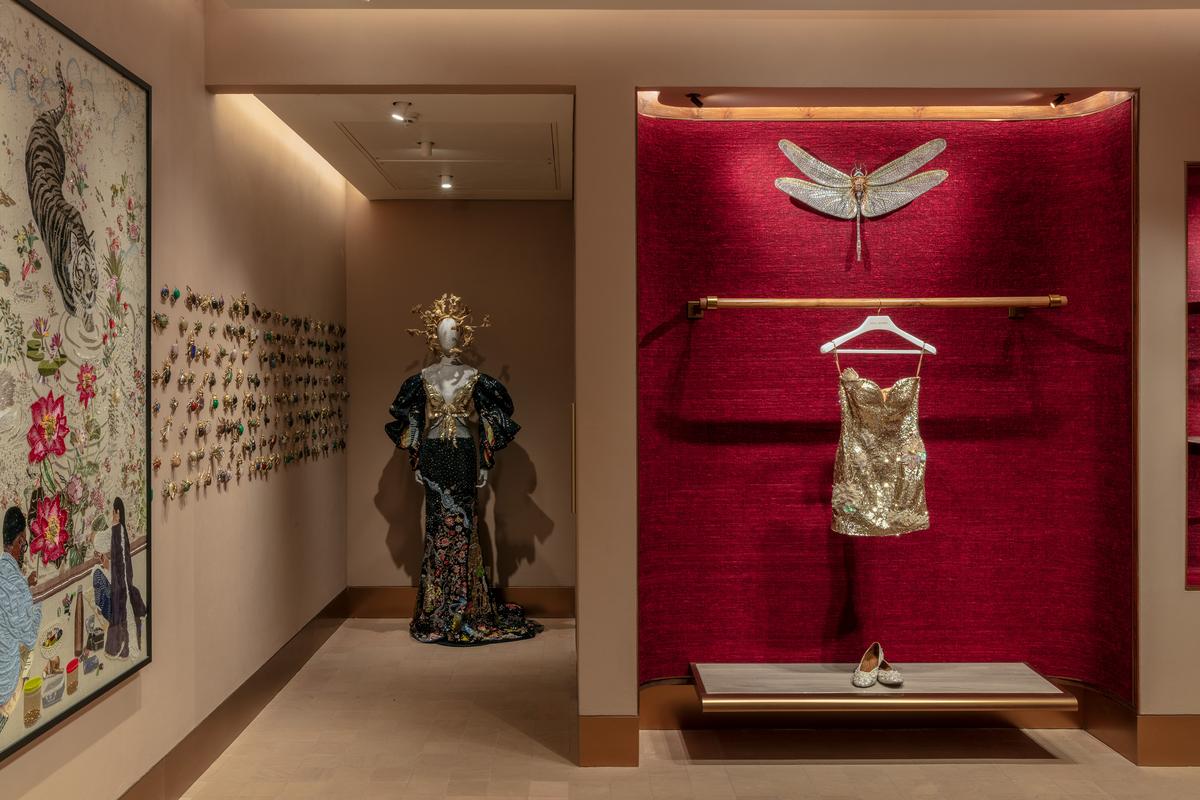
A view of the store.
| Photo Credit:
Pankaj Anand
What makes the atelier distinct from other luxury retail is that Mishra’s craftsmanship is embellished deep into the brick and mortar, evident that it is a Rahul Mishra Maison, even without the presence of fashion grounding it. “The idea wasn’t to create a space that was merely a blank canvas, but where the architecture and interiors are as intrinsic to the brand as are the garments,” says Shroff, who wanted the store to be a repository of Mishra’s vast body of current and archival work, an introduction to those who were unfamiliar with his craft.
“I feel that in today’s world, where everything is accessible online, the role of a physical space needs to evolve into much more than just a retail experience. It should offer the end user something deeper, especially when it comes to the kind of clothes Rahul Mishra Maison is creating and selling. These are more occasional pieces, not impulse buys, but purchases tied to planned events and celebrations. In such cases, one needs to be immersed in the designer’s world, with an experience that goes beyond just the transactional,” says Shroff, about the importance of creating an environment that gives a glimpse into the mind and the workings of the designer.
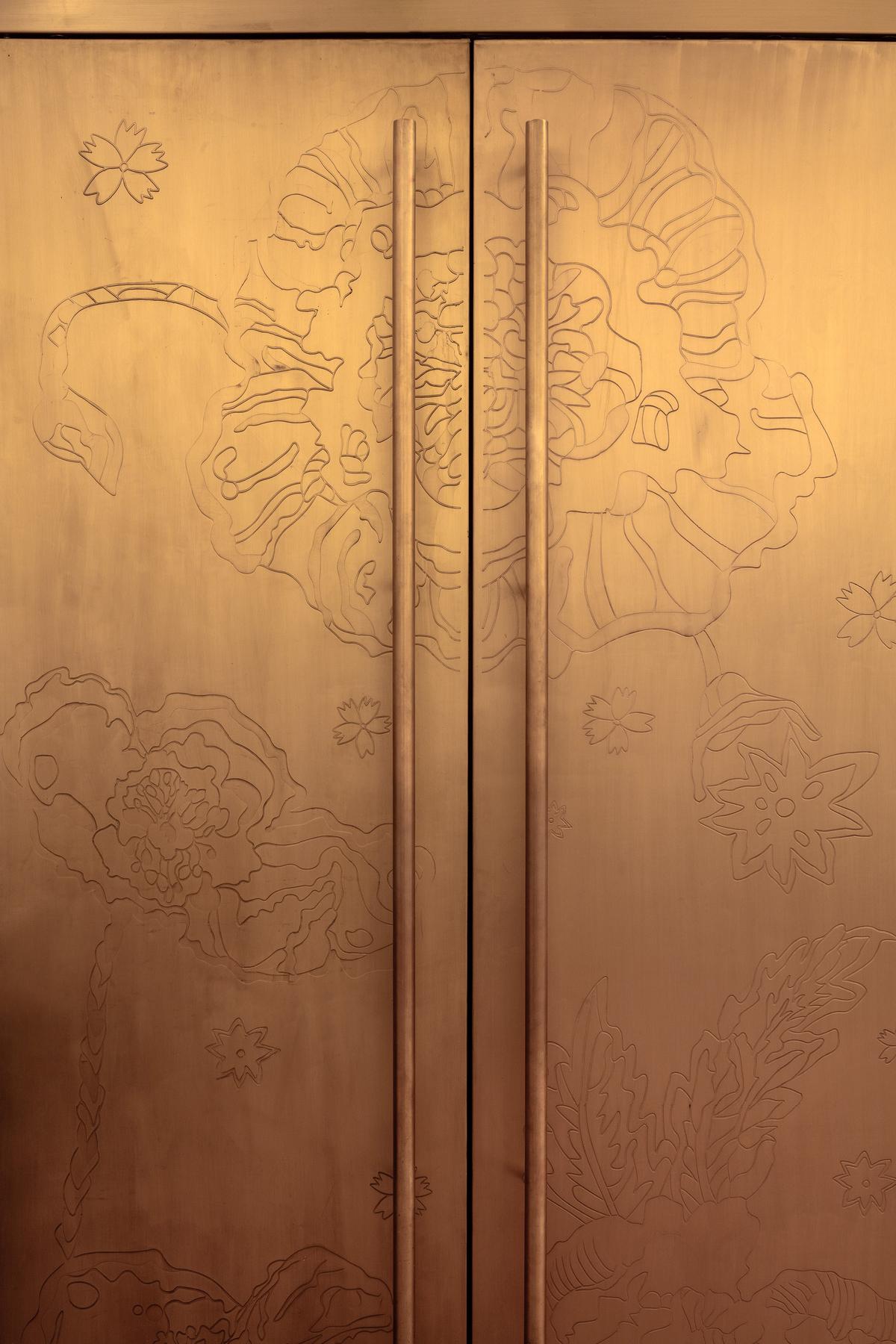
A glimpse of the detailing.
| Photo Credit:
Pankaj Anand
Deeper into the store, you see how this artistry unfolds. Mishra’s design leitmotifs, drawn from the botanical, avian, and entomological worlds that he has created in couture, are anchored in the space itself. Birds are carved into the wooden marquetry. Inlaid marble lamps and vases add a visual softness. A wall glitters with jewel insects embellished with semi-precious stones. Each of these elements has been an intrinsic part of his visual narrative.
Roughly textured onyx podiums provide a rustic materiality, statement pieces doubling up as platforms for couture. Everything holds the story of Mishra’s visual narrative in their language. The fashion designer’s atelier, too, has created vignettes through the store. On wood panels, artisans have crafted intricate floral buds with French knots. Flower blossoms have been embroidered onto the wall cladding.
The material palette also echoes earthiness. Pink sandstone flooring is punctuated with custom-made carpets featuring motifs from previous collections, and the entire space is complemented by wall colours in different shades of nude.
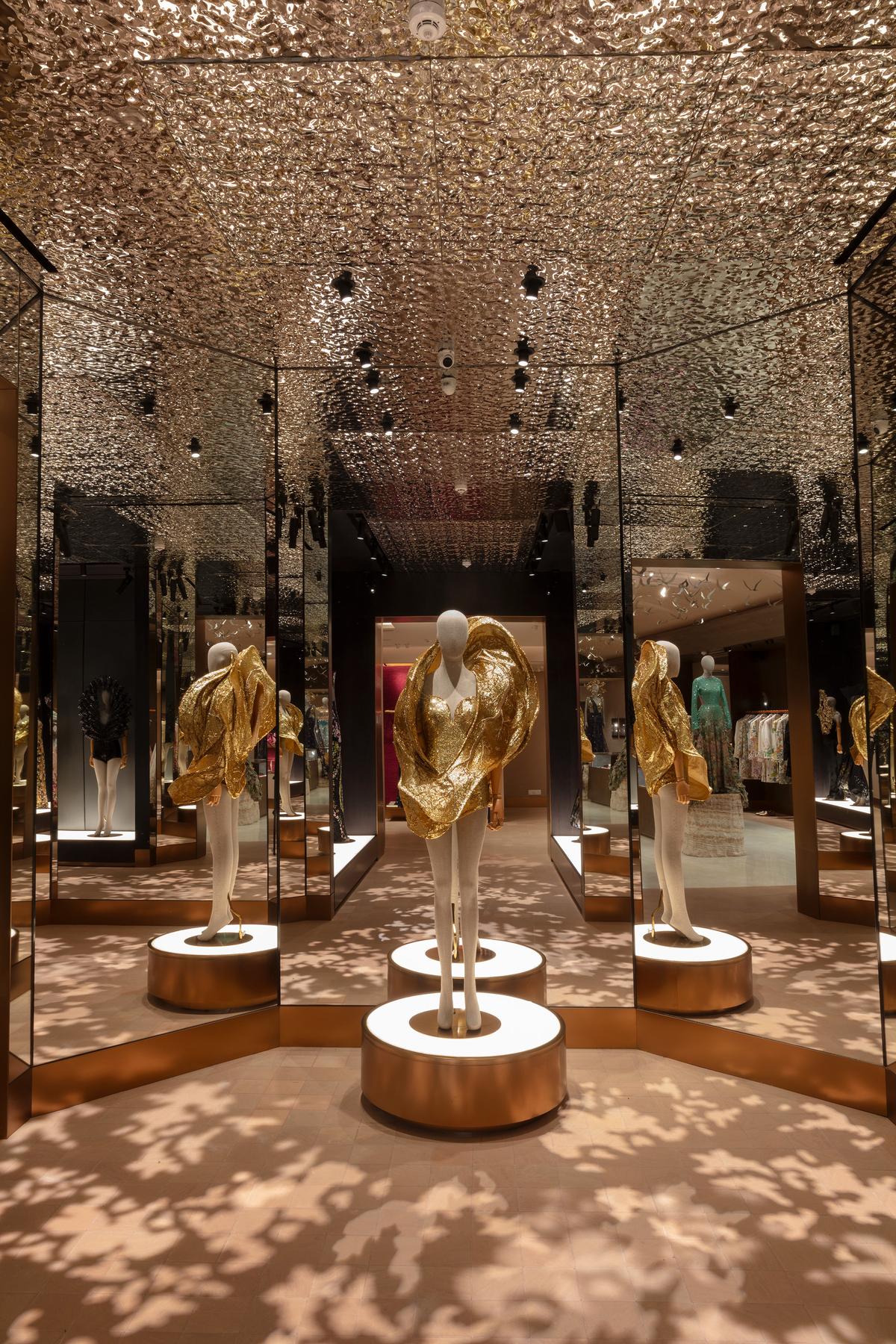
A glimpse of the detailing.
| Photo Credit:
Pankaj Anand
The atelier features Mishra’s couture, prêt-à-porter label AFEW, a few select artworks created at the atelier by the artisans, their coveted couture bags, and intimate personal shopping suites. “It has almost a maximalist zen feel,” Mishra concludes, summing up his paradoxical emotions for the maison.
The writer is a sustainability consultant and founder of Beejliving, a lifestyle platform dedicated to slow living.
Published – August 22, 2025 06:09 pm IST







